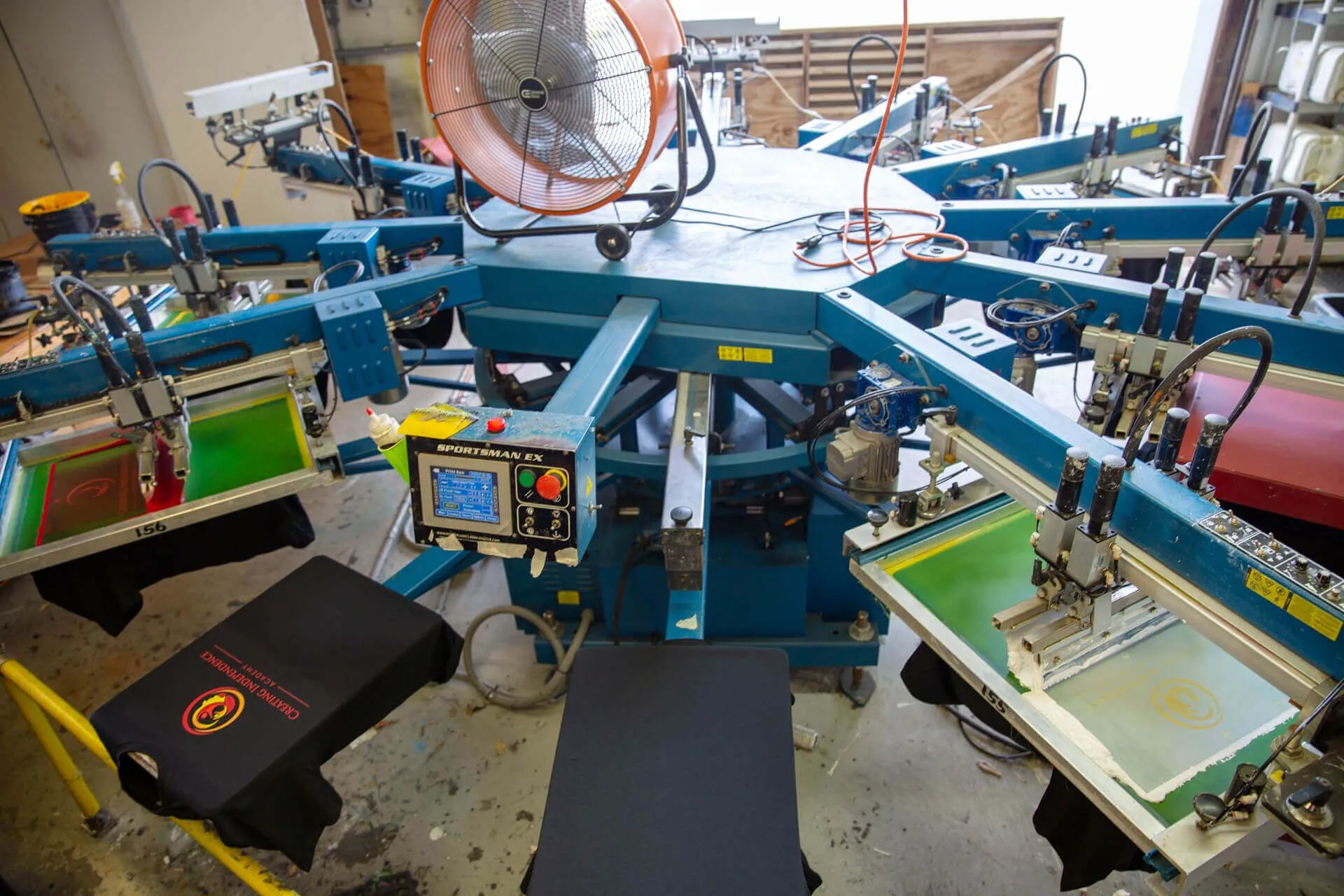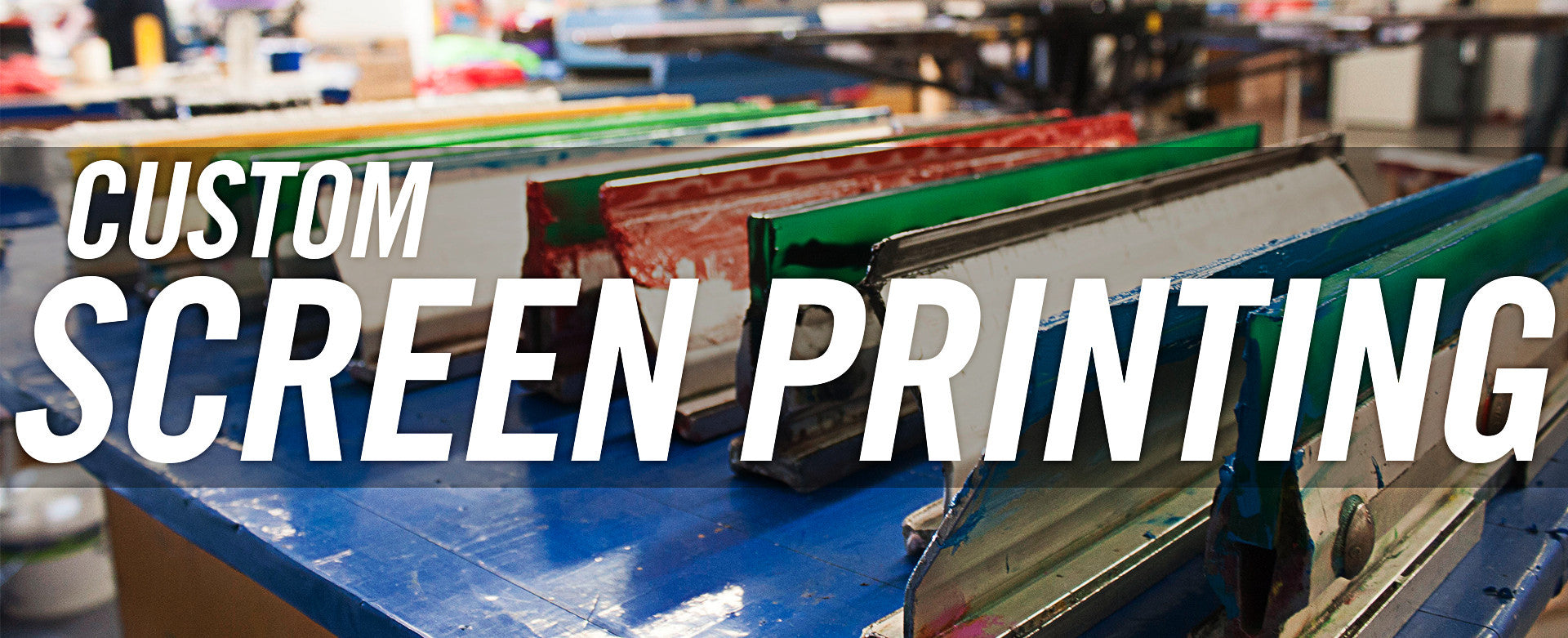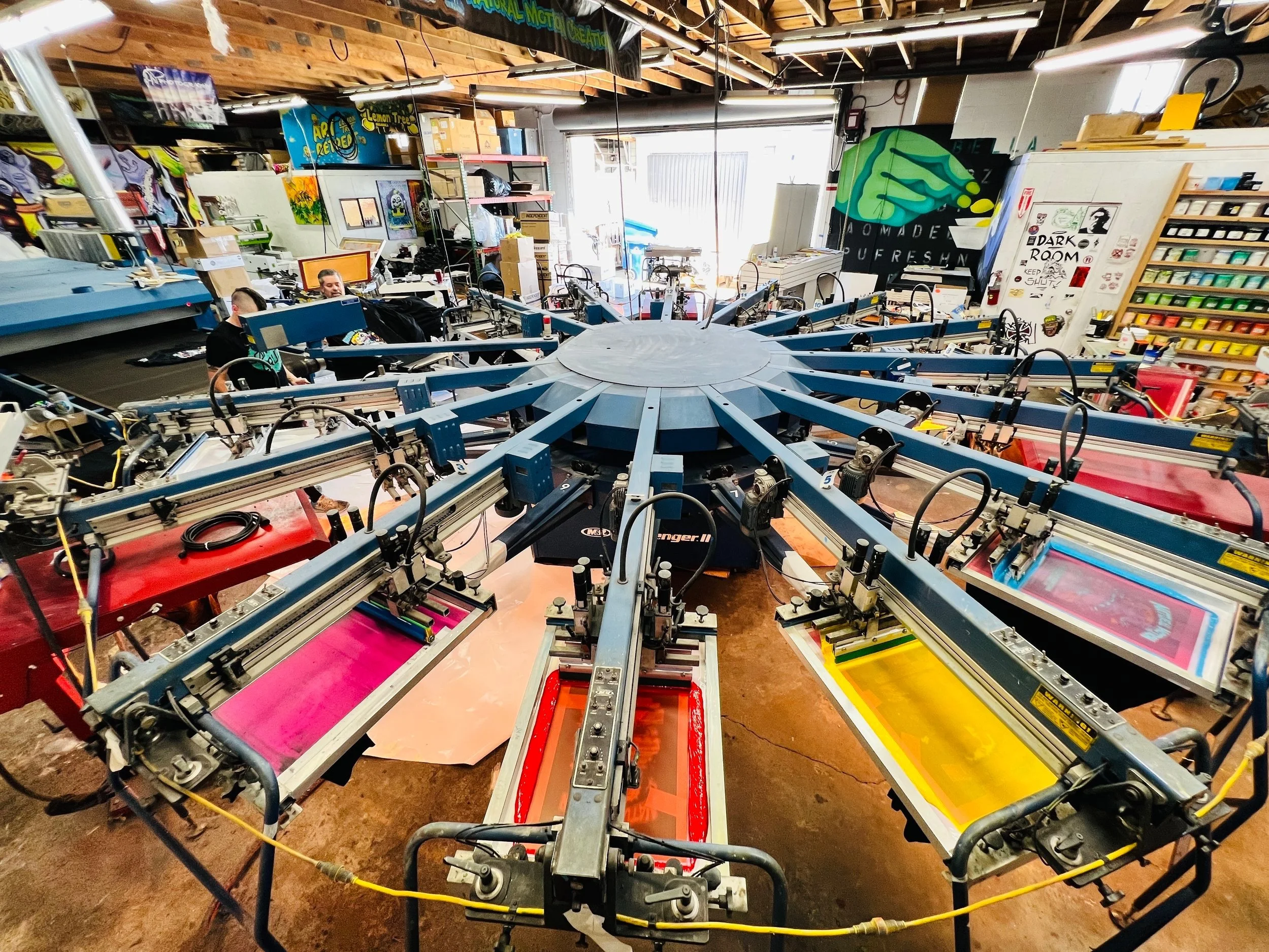Detailed Silk Screen Printing for Custom Art Apparel
Display Printing Uncovered: Whatever You Required to Find Out About T-Shirt and Garment Printing Techniques
Display printing is an interesting method that integrates art with technique, offering countless possibilities for imagination. All set to explore the essential components that make screen printing an art type?
The Essentials of Display Printing: How It Functions
When you dive into display printing, you'll find it's both a scientific research and an art. At its core, screen printing includes producing a stencil, or screen, that permits ink to pass via only in details areas.
Position the screen over the fabric, then use a squeegee to push ink with the display onto the garment. Each action is essential, and understanding them will elevate your screen printing abilities, transforming easy garments right into one-of-a-kind, expressive pieces.
Sorts Of Display Printing Techniques
Once you grasp the fundamentals of screen printing, it's time to explore the various techniques that can elevate your styles. One prominent technique is conventional screen printing, where ink is pushed through a stenciled screen.
If you're intending for great details, take into consideration discharge printing. This strategy eliminates dye from the fabric, leaving a soft, vintage look. An additional choice is plastisol printing, known for its resilience and vivid shades, making it a favored for lots of brands. Lastly, experiment with halftone printing to develop slope effects and intricate layouts. Each strategy has its special charm, so don't think twice to try them bent on locate what fits your design best!
Necessary Devices for Screen Printing
To attain stunning outcomes in display printing, having the right equipment is fundamental. You'll need a sturdy screen printing structure, which holds the mesh that moves your layout onto the garment. Next, invest in premium mops; these are crucial for applying ink evenly across the display.
Picking the Right Inks and Products
When picking inks and products for display printing, you need to think about the type of ink that works best for your task. Consider textile compatibility to assure your layouts look last and excellent lengthy. Explore environmentally friendly ink options to make your printing procedure extra lasting.
Sorts Of Screen Inks
Choosing the best screen ink is important for achieving lively, resilient prints that fulfill your project's demands. There are several types of display inks to analyze. Plastisol ink is popular for its adaptability and simplicity of use, offering outstanding color opacity on dark fabrics. Water-based ink, on the various other hand, offers a softer feeling and is environment-friendly, making it excellent for those aiming to lessen their environmental effect. Discharge inks get rid of dye from the textile, causing a soft, vintage appearance but call for particular handling. Specialized inks, such as glow-in-the-dark or metal, can add unique impacts to your styles. Evaluate your job demands and pick the ink that lines up finest with your wanted result.

Material Compatibility Considerations
Comprehending material compatibility is vital for achieving high-grade display prints, specifically considering that various products respond distinctively to different inks. When choosing inks, take into consideration the fabric kind-- cotton, polyester, or blends. For cotton, water-based inks function well, providing softness and breathability. Polyester, on the other hand, frequently requires plastisol inks for far better bond and lively colors. If you're printing on blends, you might need to use a mix of both types. Constantly examine your inks on example fabric to assure they stick appropriately and preserve color honesty. In addition, bear in mind that textile weight and texture can influence the final outcome, so picking the best ink and material combination is crucial for your project's success.
Eco-Friendly Ink Options
Eco-friendly inks are ending up being a preferred selection for display printers who want to reduce their ecological influence while preserving top quality. When selecting inks, think about water-based inks, which are much less hazardous and less complicated to cleanse up contrasted to typical solvents.
In addition, look for inks made from renewable energies, such as soy or vegetable-based choices. By selecting the best inks and materials, you'll not just produce sensational styles however additionally add to an extra lasting printing process. Make the switch, and your prints will mirror your dedication to the setting!
Preparing Your Layout for Screen Printing

File Format Requirements
To assure your style looks lively and sharp on fabric, you'll need to pay close focus to submit format requirements for screen printing. Begin with vector data like AI or EPS, as they can be scaled without losing top quality. If you use raster pictures, go with high-resolution data, such as TIFF or PNG, preferably at 300 DPI. Avoid using JPEGs, as they can shed clarity when resized. Make sure your layout has a clear background to stop unwanted white edges on your prints. Finally, keep color settings in mind; CMYK is typical for display printing, so convert your RGB develops appropriately. By complying with these standards, you'll set your artwork up for a successful print.
Shade Splitting Up Strategies
Shade separation is a crucial action in preparing your style for display printing, and grasping it can significantly boost your print high quality. You'll require to break your design into article source specific colors, as each shade needs a separate display during printing. This accuracy not just assures exact shade depiction but additionally simplifies the printing procedure.
Resolution and Size
Attaining the most effective cause screen printing starts with guaranteeing your style has the best resolution and dimension. Preferably, your artwork must go to least 300 DPI (dots per inch) for sharp, clear prints. If you utilize reduced resolution, your last item may look pixelated and less than professional.
When it involves size, consider the measurements of your print area. Layout your artwork to match the final print dimension, preferably developing it in the real measurements you'll be printing. By doing this, you'll avoid any kind of unexpected scaling concerns.
Always inspect your design in both vector and raster layouts. Vector graphics can be scaled without losing quality, making them excellent for display printing. Preparing correctly will guarantee your style looks amazing on every garment!
Step-by-Step Display Printing Refine
Screen printing is a dynamic procedure that allows you to produce vivid styles on different surfaces. To get started, you'll require a display, solution, and your chosen ink.
After rinsing the unexposed emulsion, your screen is ready. Establish it up on your printing surface and straighten your garment under it. Put ink onto the display and make use of a squeegee to press the ink with the stencil onto the textile. Raise the screen very carefully and let the print dry. Treat the ink using heat to assure longevity. That's it! You have actually effectively screen published your style.
Tips for Successful Display Printing Projects
While you're diving into your display printing jobs, bear in mind that preparation is essential to success. Beginning by gathering all your products-- inks, mops, screens, and garments. A clean work area aids stop undesirable errors, so clean up before you start.
Next, confirm your artwork is high-resolution and effectively sized for your garment. Evaluate your display for proper direct exposure and tidy it extensively to prevent spots. When blending your inks, follow the maker's guidelines to accomplish the appropriate consistency.
Throughout printing, use also pressure with your squeegee for regular outcomes. Don't hurry; take your time to verify each print satisfies your standards. After printing, let your garments completely dry entirely prior to dealing with or packaging them.
Last but not least, always keep a helpful site sample of your help future referral. By doing this, you can examine your progression and improve your techniques with time. Delighted printing!

Regularly Asked Inquiries
For how long Does It Require To Establish a Display Printing Work?
Establishing up a screen printing job usually takes about thirty minutes to an hour. You'll prepare the screens, mix inks, and adjust journalism. The moment varies based upon complexity and experience, so stay arranged!
Can I Print on Different Fabric Enters Utilizing the Same Technique?
Yes, you can publish on various fabric kinds making use of the exact same method, however you'll need to readjust your settings and inks. Some fabrics absorb ink differently, so trying out warranties the most effective results for each and every product.
What Prevail Mistakes to Stay Clear Of in Display Printing?
When screen printing, avoid common errors like using the incorrect ink, overlooking appropriate direct exposure times, or avoiding pre-press checks. Always examine your configuration and maintain tidy screens to guarantee top quality results each time.
Just How Can I Appropriately Clean and Keep My Screen Printing Tools?
To correctly clean and keep your screen printing tools, you ought to on a regular basis wash displays with suitable solvents, examine squeegees for wear, and assure all tools are kept dust-free and dry. Uniformity improves and stops expensive repair work performance.
Is Display Printing Ecologically Pleasant Contrasted to Other Techniques?
Screen printing can be a lot more environmentally friendly than various other approaches, especially if you make use of eco-conscious products and water-based inks. By picking sustainable materials and practices, you reduce waste and reduce your impact on the world.
Display Printing Uncovered: Everything You Need to Know Regarding Tee and Garment Printing Techniques
At its core, display printing involves producing a pattern, or display, that permits ink to pass through just in specific areas. Position the screen over the fabric, then utilize a squeegee to press ink with the screen onto the garment. One prominent technique is standard display printing, where ink is pressed via a read more stenciled display.When choosing inks and products for screen printing, you need to take into account the kind of ink that functions ideal for your task.